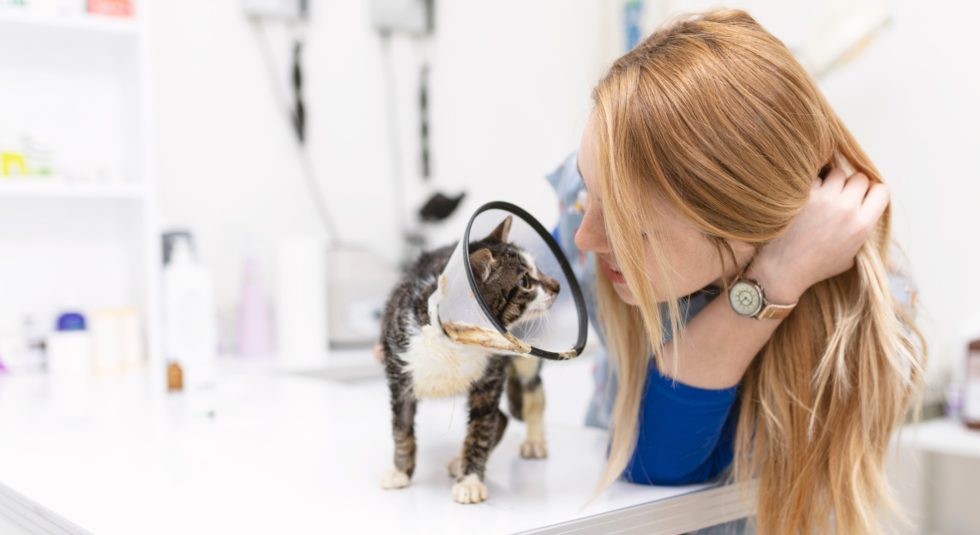Photo Credit: pxhere.com
Is stress the reason you forgo your pet’s annual check-ups? It does not have to be that way. Read on to find out what you can do to make this a better experience for your pet and yourself. Health Checks are critical to good, preventative pet health care and should not be forfeited.
Fortunately, The Village Vet understand these stressors that can trigger your pets and have taken measures to ensure a visit to see us is as stress free as possible. This is important not just only because stress negatively affect pets and creates psychological trauma, it can also be so severe that test results are skewed and the immune system is weakened.
Separate Consult Rooms
The Village Vet have separate consult rooms for cats and dogs. The cat consult room in Killara is positioned further away from the door to reduce the access to dogs as they come and go to their own consult room.
The Village Vet Mobile Service
The Village Vet is also able to visit your pet in the comfort and security of your own home. If you feel your pet is experiencing significant stress from either the car journey or the veterinary clinic please ask our lovely receptionists about our Mobile Vet Service.
Seven Point Plan for a Stress Free Vet Visit
The aaha.org suggest the following seven step plan for calming fears and ensure a more positive handling experience:
1/ Handling Your Pet
Ears, face and paws are areas that your pet will most object to being handled. Ideally, begin these routines when they are young and they will grow up being comfortable with handling and examinations. However, even a pet adopted later in life can be conditioned to accept handling, grooming and restraint.
Method One: High Value Treats
Begin by pairing potentially unpleasant handling with high-value treats. Train your dog to give you her paw for nail trims in return for a treat, or have your cat or dog focus on a high value treat while you clean their ears. Creating a positive association with the handling of these two tricky areas vastly increases your pet’s quality of life by reducing the struggle and fear commonly associated with being handled.
Method Two: Relaxed Handling
At home, when your pet is relaxed, spend time getting them used to being examined and gently handle their feet, ears and tail.
2/ Appointments
When scheduling your pet’s next appointment, ask us for the earliest time slot or ask when is the quietest time to visit. This will be your best chance at being in and out of the vet without emergency delays interrupting the vet’s daily work schedule. It also reduces the number of other pets coming and going from their own appointments that may enhance the stress levels of your pet.
Alternatively, let us know you have arrived and wait in the car, wait outside the clinic or walk around the block until your vet is ready to see you – we can call you when the consult room is free.
Having your pet’s medical history, medication names, food and exercise routines to hand will help reduce time in examination rooms. Leaving home in plenty of time can help ensure you, and therefore your pet, are not feeling rushed and stressed.
3/ Crates, Leashes and Carriers
Most pets only see the cat carrier or dog crate come out when it’s time to visit the vet and just looking at the carrier can raise anxiety levels in our pets. This negative association leads to a struggle to get your pet inside stress-free. To avoid this association, leave the carrier out occasionally and routinely throw a few high-value treats into the carrier for some change of scene fun. Your pet will soon associate the carrier with good things.
Line the carrier with a blanket spritzed with Feliway spray for cats and add their favourite toy or bedding to make your pet feel comfortable and secure while traveling.
Dogs may respond well to Adaptil which can be sprayed onto their carriers, collars or a bandana that the dog will wear round it’s neck.
4/ Come By to Say Hi
When you have time, stop by for a social visit. Make a few happy, treat-filled visits with no consultation and reassure your pet that they can feel comfortable with the clinic and our staff. Load up on your pet’s favourite snacks and let the veterinary team offer them to your pet or we have some handy at reception. If we know you are stopping by for a non-stress visit, our staff will always oblige with a massage, belly rubs and special treats.
5/ Hide Your Fear
Our pets are remarkably in-tune with their owner’s feelings and emotions. If you are nervous about a veterinary visit, your pet will pick up on that and also become anxious. Project a calm demeanour, speak in a soft, soothing voice and try to avoid excessive petting. Your pet will pick up on your calming cues and relax if you do. Continue this vibe throughout the consultation with your vet.
6/ Arrive Hungry & Exercised
A hungry pet will may be more treat-motivated, allowing your veterinary team to use a treat as a useful distraction. Skip breakfast the morning of your appointment and bring treats you know your pet loves to reward them for good behaviour.
7/ Be Prepared
Ask our staff to help. They are used to dealing with anxious animals and have strategies that can help smooth your visits. Call the clinic ahead of time and let us know so we can be there to assist as soon as you arrive.
Book online at The Village Vet or call us directly at the Pymble Clinic on 9499 4010 or Killara Hospital on 8350 5678.
Sources
- Dr Martine Perkins, The Village Vet (Pymble Vet Clinic and Killara Vet Hospital)
- aaha.org: How Can my Pet Have Stress-free Veterinary Visits?
- Vetschoice.com.au: Dr Alice Marshall, Registered Veterinarian (NSW VSB)


